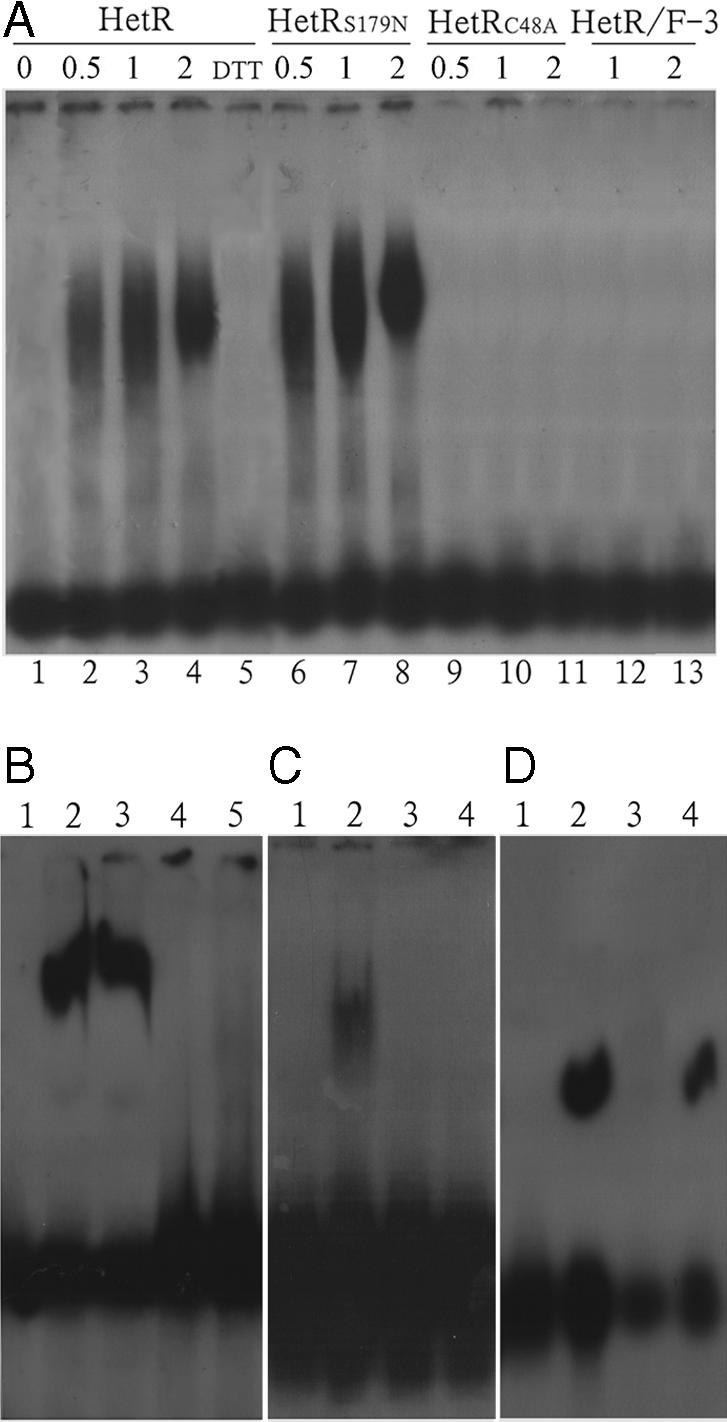Fig. 4.

EMSA for DNA binding by HetR proteins. (A) Homodimerization of HetR is required for its DNA-binding activity. A DNA fragment from the hetR promoter (FhetR-1, lanes 1–11) and a fragment from the coding region of hetR (FhetR-3, lanes 12 and 13) were PCR-amplified and end-labeled with 32P for EMSA. Lanes 1–4, HetR concentration-dependent effect on gel mobility. The concentrations (in μM) are shown above the gels. Lane 5, same as in lane 4 except that 2 mM DTT was included in the reaction solution. Lanes 6–8, concentration-dependent DNA binding by HetRS179N. Lanes 9–11, no mobility shift was detected with HetRC48A. Lanes 12 and 13, no gel shift was observed at HetR concentrations as shown when FhetR-3 was used for EMSA. (B) HetR binding to the fragment FhetR-2 from the hetR promoter. Lane 1, no HetR added; lanes 2–4, HetR, HetRS179N, and HetRC48A were added, respectively; lane 5, FhetR-3 was used with the addition of HetR. (C) HetR binding to the fragment from the hepA promoter. Lanes 1 and 2, FhepA-1; lanes 3 and 4, FhepA-2. Lanes 1 and 3, no addition of HetR; lane 2 and 4, with addition of HetR. (D) HetR binding to the fragments from the patS promoter. Lanes 1 and 2, FpatS-1; lanes 3 and 4, FpatS-2. Lanes 1 and 3, no addition of HetR; lanes 2 and 4, with addition of HetR. The concentrations of HetR proteins in B–D were all 1 μM.
